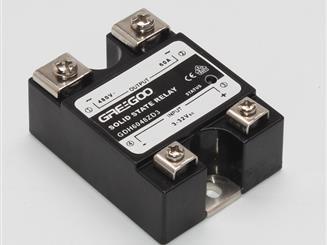Rotating Diode vs. Standard Recovery Diode: Key Difference and Application
The main difference between a rotating diode and a standard recovery diode lies in their applications and performance characteristics:
1. Rotating Diode
- Application: Used in brushless excitation systems of synchronous generators (alternators).
- Function: Converts AC to DC in the exciter rotor circuit to provide field current to the main rotor.
- Characteristics:
- Designed to handle high-speed rotation and mechanical stress.
- High reliability and durability to withstand vibrations and centrifugal forces.
- Typically mounted on the rotating part of the alternator (rotor).
- Works in conjunction with an exciter and main generator to provide a stable DC excitation.
2. Standard Recovery Diode
- Application: General-purpose rectification in power supplies, motor drives, and other electronic circuits.
- Function: Allows current to flow in one direction while blocking it in the other.
- Characteristics:
- Typically has higher reverse recovery time compared to fast recovery or Schottky diodes.
- Used in low to medium-frequency rectification applications.
- Not designed to withstand high mechanical stress or rotation.
Key Differences
| Feature | Rotating Diode | Standard Recovery Diode |
|---|---|---|
| Application | Excitation system of synchronous generators | General rectification in electronics |
| Location | Mounted on the rotating part of the machine | Fixed, mounted on a PCB or heat sink |
| Durability | Designed for mechanical stress, vibration, and centrifugal force | Standard construction for stationary use |
| Speed Consideration | Works in high-speed rotating environments | Used in static applications |
| Recovery Time | Fast recovery to improve generator performance | Slower recovery compared to fast recovery diodes |
A rotating diode is a special type of rectifier diode used in the brushless excitation system of synchronous generators (alternators). It is mounted on the rotating part of the machine (rotor) and plays a crucial role in converting AC (alternating current) to DC (direct current) to provide stable excitation to the generator's main field winding.

Socket Solid State Relay and Solid State Relay with Integrated Heatsink, what's the difference between feature and application
DIN rail mounted Socket Solid State Relay and Solid State Relay with Integrated Heatsink
Read More
What are the main difference between electrical holding and magnetic holding in vacuum contactor?
In summary, the main difference between electrical holding and magnetic holding in a vacuum contactor is the method used to maintain the closed position of the main power contacts when the coil is de-energized. Electrical holding uses an external electrical circuit to provide continuous holding force, while magnetic holding relies on the energy stored in a permanent magnet to maintain the closed position without an external power supply.
Read More
𝑪𝒐𝒏𝒔𝒊𝒅𝒆𝒓𝒂𝒕𝒊𝒐𝒏𝒔 𝒇𝒐𝒓 𝑺𝒐𝒍𝒊𝒅 𝑺𝒕𝒂𝒕𝒆 𝑹𝒆𝒍𝒂𝒚𝒔 𝑺𝒆𝒍𝒆𝒄𝒕𝒊𝒐𝒏
For resistive loads, a 2-3 times higher load current can be selected. For inductive or capacitive loads, a 3-4 times higher load current can be selected.
Read More
DC solid state relay and DC contactor, which one is better?
DC Solid State Relays (DC SSR) and DC contactors are both switching devices used to control circuits, but they have significant differences in working principles, performance and application.
Read More













